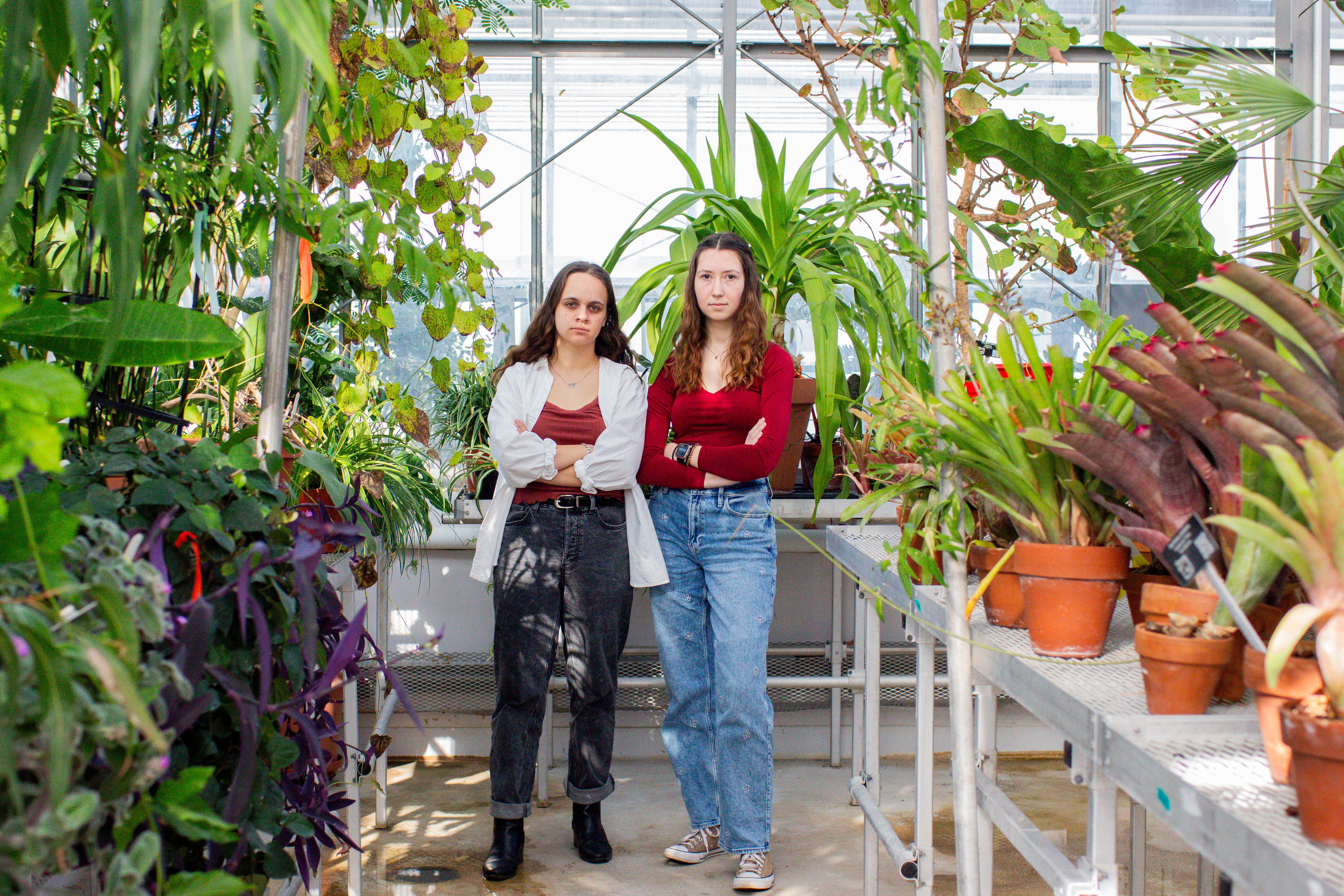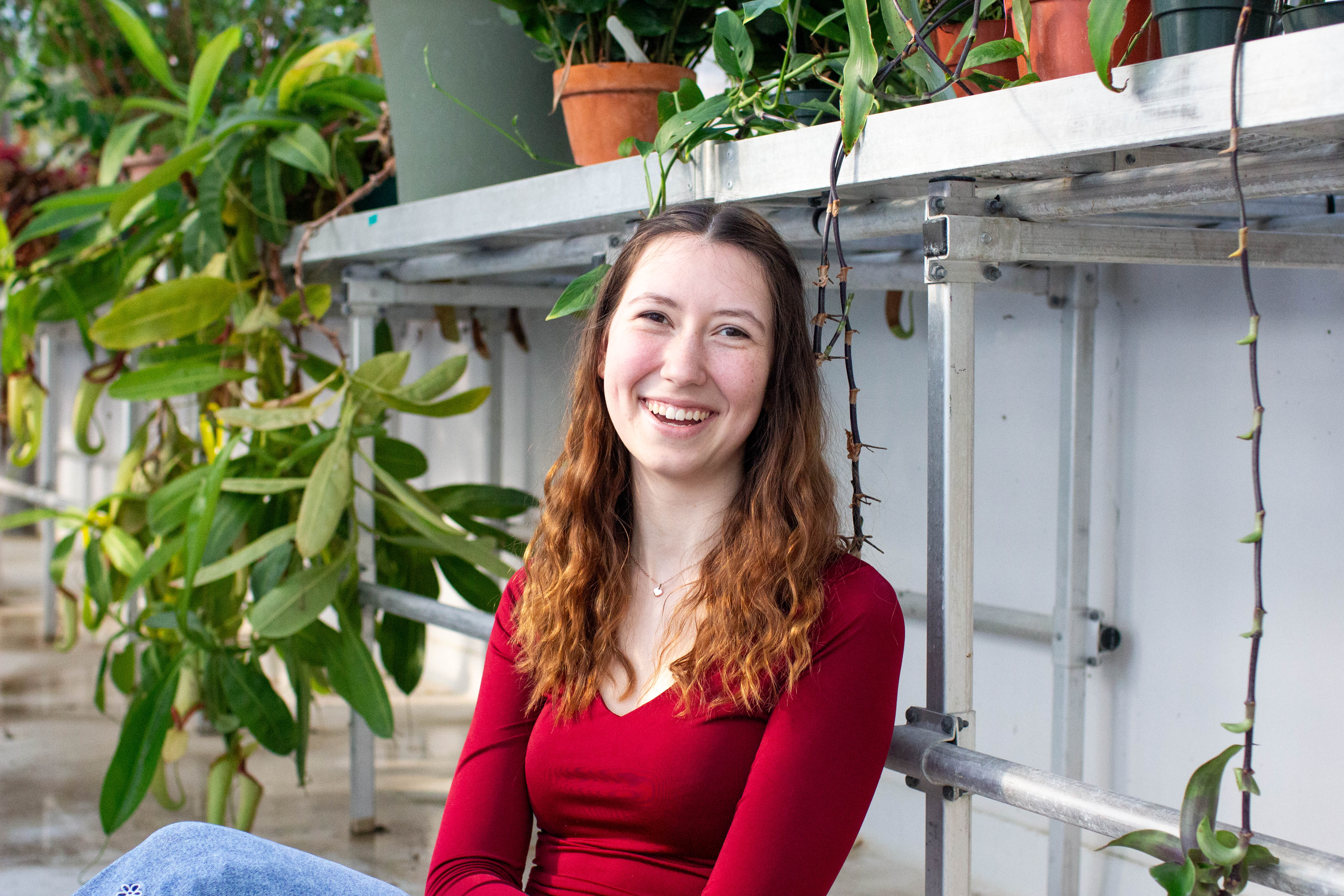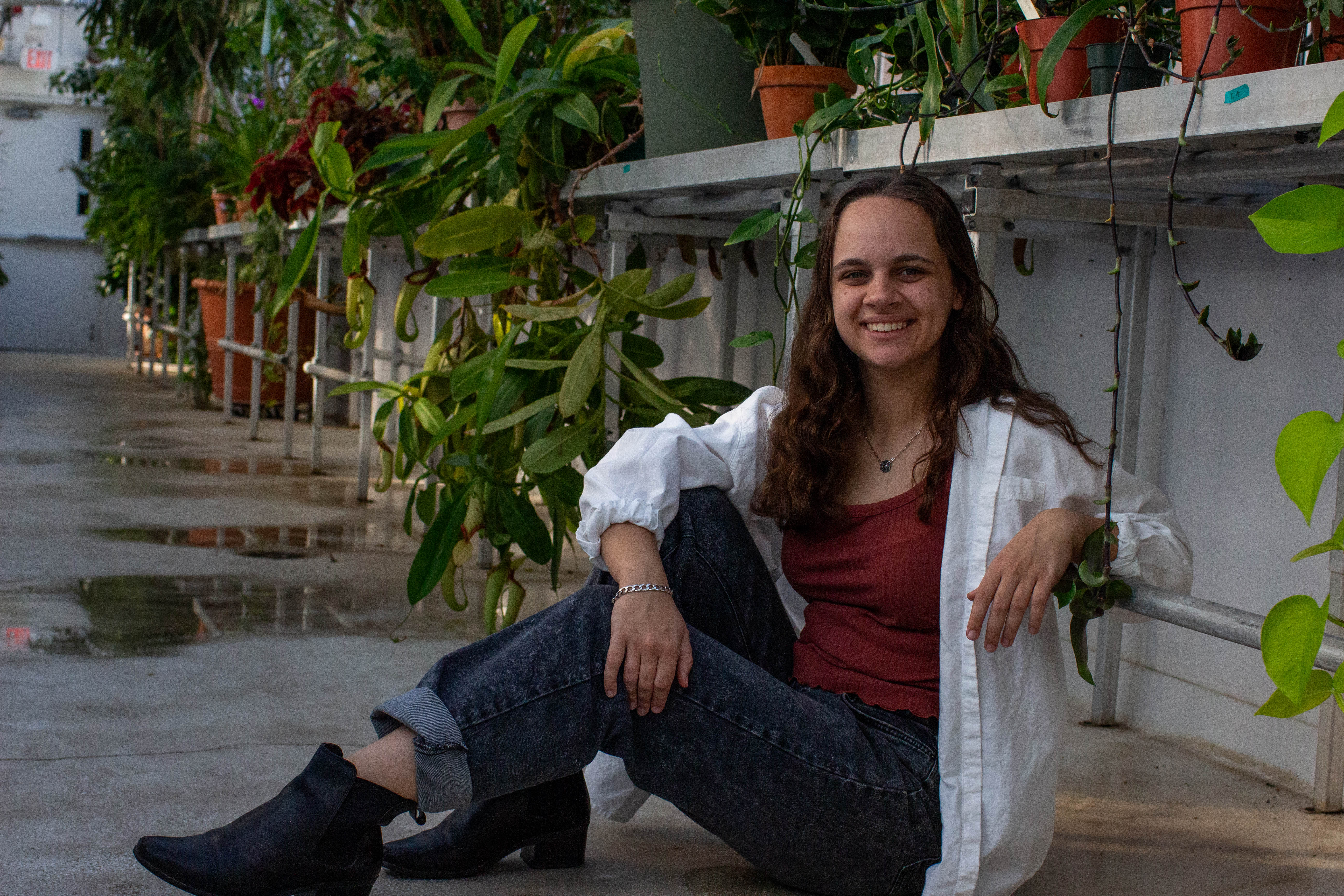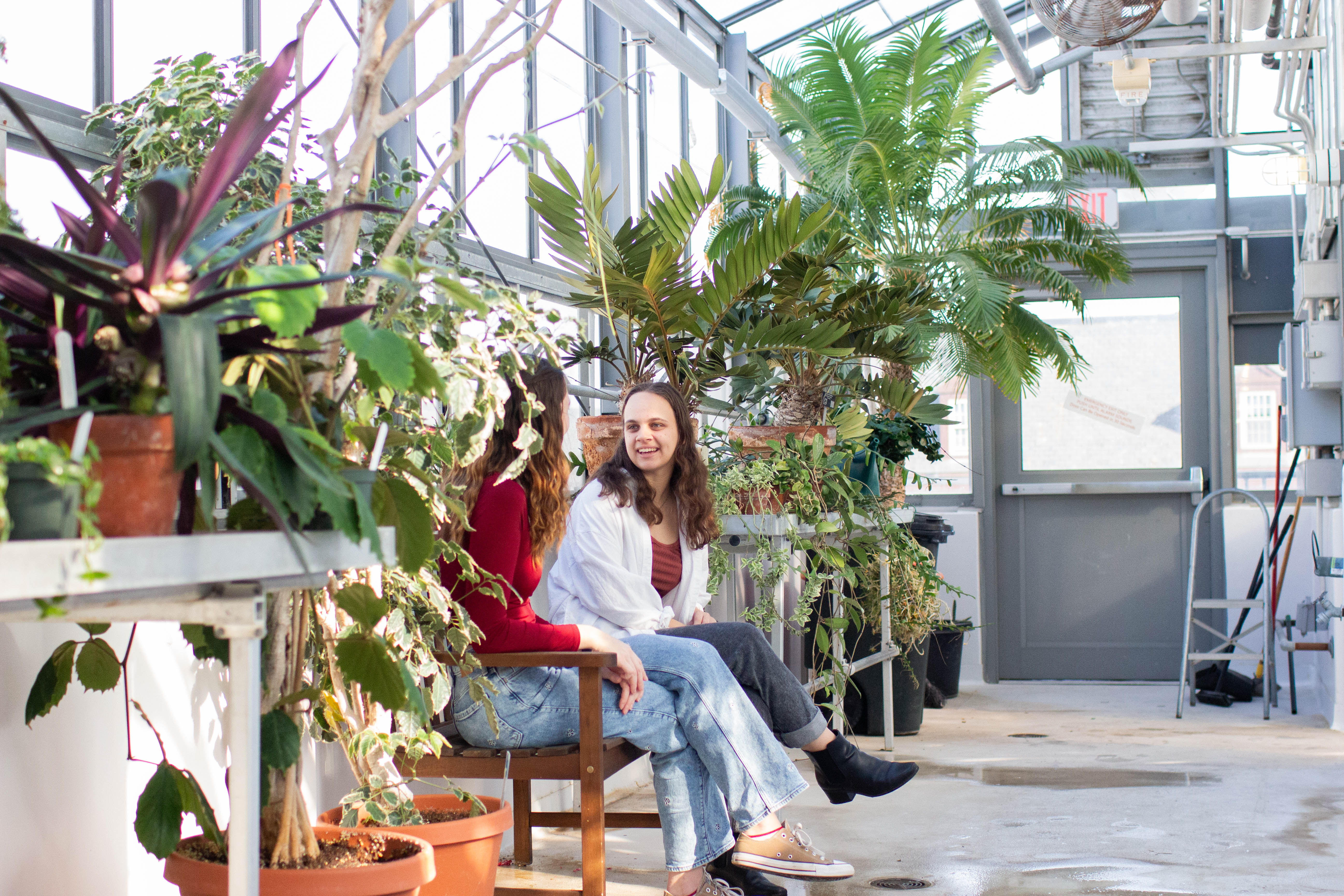W&M undergraduate researchers take on climate change
 As scientists all over the world grapple with the impact of global climate change, two William & Mary undergraduates are throwing their lab coats in the ring to identify potential solutions to the most pressing environmental concern of our time.
As scientists all over the world grapple with the impact of global climate change, two William & Mary undergraduates are throwing their lab coats in the ring to identify potential solutions to the most pressing environmental concern of our time.Though they have different advisors, research subjects, and experiences, biology and environmental science major Olivia Cunningham ’25 and neuroscience major Megan Fleeharty ‘24 share the same goal: to see their work expand beyond the lab and experience real-world impacts.
Cunningham’s work was funded by a Charles Center Honors Fellowship and focuses on the hybridization, or crossbreeding, of plants due to climate change. Because of the impact of climate change on various habitats and conditions, organisms sometimes crossbreed in order to strengthen their responses to a changing environment. In Cunningham’s case, the subjects of interest are two populations of milkweed – common and poke.
Cunningham first became involved with this research during her freshman year when she worked in Biology professor Joshua Puzey’s lab. Last summer she picked up part of this research on her own and traveled to South Dakota and various regions of Virginia.
 “Poke milkweed only lives in forested, moist, shaded habitats. The common milkweed lives in bright, sunny areas,” Cunningham said. “The poke milkweed habitat is being destroyed by climate change and power lines going into the forests, and in the powerline clearings, we’ve observed hybridization between the common and poke milkweeds.”
“Poke milkweed only lives in forested, moist, shaded habitats. The common milkweed lives in bright, sunny areas,” Cunningham said. “The poke milkweed habitat is being destroyed by climate change and power lines going into the forests, and in the powerline clearings, we’ve observed hybridization between the common and poke milkweeds.”Cunningham is most curious about how this crossbreeding occurs. She believes that as milkweed becomes more endangered, this tactic might be a way for the plant to reproduce and preserve itself. She began to study pollinia, or sacks of pollen, that aid in milkweed reproduction and how they might germinate, or grow, out of both common and poke nectar.
Though Cunningham’s results are preliminary, she has seen more success with the common milkweed pollinia growth in the poke milkweed’s nectar rather than the other way around. In the field, she also observes hybrid plants outcompeting the parent or original plants.
“I think this gives us a good picture of how hybridization could help plants in the future because climate change is a rampant thing that the world is facing,” Cunningham said. “Through studying milkweed and understanding how it’s hybridizing; we could potentially apply that to other systems to explain how things are happening.”
Cunningham recalled her favorite memory from this past summer which occurred when she was driving back from a research site having just collected critical data.
“At that moment, I was the only person in the world that knew the results,” Cunningham said. “I’m an undergrad in college and knew more about this one, very specific, niche plant in this circumstance than anyone else.”
Due to her strong interest in research, Cunningham plans to apply for Ph.D. programs in the future. She also hopes to continue researching milkweed next summer and during her senior year.
“I knew I liked plants, but this kind of showed me that this is what I want my life to be,” Cunningham said. “The Charles Center fully enabled me to get this experience.”
 Similarly, Fleeharty hopes to build upon her research by pursuing a Ph.D. program after graduation. Her work focuses on the field of synthetic biology, specifically on different kinds of bacteria in soils that can sequester, or remove, pollutants. Fleeharty first became interested in this work after joining iGEM, or International Genetically Engineered Machine, a competitive synthetic biology research team at W&M.
Similarly, Fleeharty hopes to build upon her research by pursuing a Ph.D. program after graduation. Her work focuses on the field of synthetic biology, specifically on different kinds of bacteria in soils that can sequester, or remove, pollutants. Fleeharty first became interested in this work after joining iGEM, or International Genetically Engineered Machine, a competitive synthetic biology research team at W&M. During her first year on the team, they focused on synthetic biology in the field, not just in a lab. This sparked Fleeharty’s interest in applying the science to real-world issues such as climate change. While her team worked on various types of bacteria for the last few years, Fleeharty began to use her independent parts of the project as a precursor for her Honors thesis. Now, she is looking more heavily into gene expression in engineered soil bacteria and received a Charles Center Summer Research Grant to help her complete this work.
“Because of evolution, bacteria will, over time, adapt to their environment. Sometimes that means that they will acquire genes where they can attack or degrade pollutants so that [the bacteria] can survive off of the carbon sources in those pollutants,” Fleeharty said. Bioengineering, she added, “takes those natural genes, and puts it into other species that would survive better, or engineers it in a way that gene expression is increased so that you’re degrading even more pollutants than would happen naturally.”
An integral part of her work also includes the concept of “kill switches,” a safety mechanism placed into genetically engineered bacteria that would kill them once they have sequestered the soil pollutants. This concept exists so that engineered bacteria do not last forever within the environment.
Fleeharty’s work within the synthetic biology field has given her important skills that she will be able to apply to her future studies in neuroscience. For example, she mentioned that similar engineering practices have been tested to create things like synthetic brains.
“I’ve always been interested in the molecular side of neuroscience,” Fleeharty said. “There are definitely a lot of applications that combine neuroscience and synthetic biology.”
Fleeharty hopes that synthetic biology will help address issues such as pollution, soil degradation, and climate change, especially since there are ways to engineer bacteria in order to sequester greenhouse gases.
“A lot of the time we talk about how climate change isn’t reversible. We can only slow it down. But I feel like, with synthetic biology, we have all these interesting tools in our hands that we could use to start addressing these problems,” Fleeharty said.
 Both Fleeharty and Cunningham highlighted the importance of undergraduate research as a way of pursuing their academic interests outside of the classroom.
Both Fleeharty and Cunningham highlighted the importance of undergraduate research as a way of pursuing their academic interests outside of the classroom.“It’s an eye-opening experience,” Cunningham said. “This has also been a really cool opportunity for me to network with other scientists and also professors in our department. I’m truly getting to know the faculty we have here in a way that I didn’t expect to.”
Fleeharty too sees personal faculty mentorship as integral to her William & Mary undergraduate experience and plans to continue her research through graduate study.
“I feel like you really get to understand why things work. I would say that for anyone interested in science, even if they’re not necessarily considering a career in research, I think it’s the best way to actually get a real sense of what’s happening,” Fleeharty said. “It’s such a cool opportunity that you may not get again, to produce novel information and discover more about the world that people haven’t ever discovered before.”
To Cunningham and Fleeharty, their contributions to the field of environmental science have the potential to influence efforts to combat climate change. As Cunningham and Fleeharty demonstrate, perhaps the best way to address a global problem is through embracing the hybridity and interdependence of not just the natural world, but of scientific research as well.
As W&M students, they are both committed to changing the world in whatever way they can, with the collaboration of their peers, mentorship of their professors, and the support of the Charles Center.
 Skip to main content
Skip to main content




